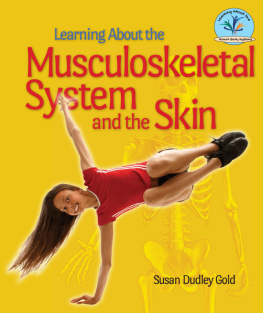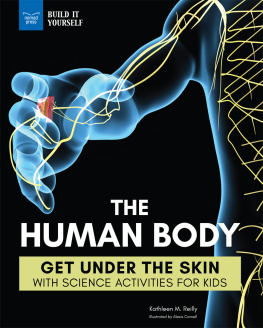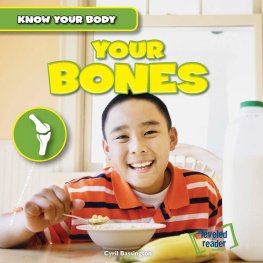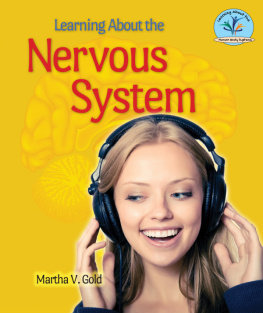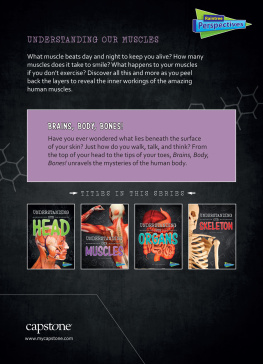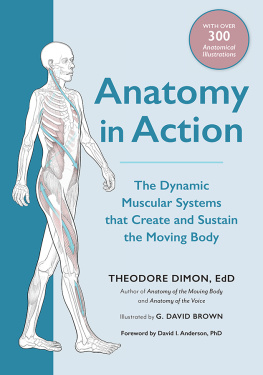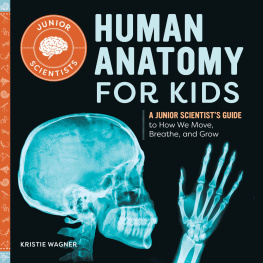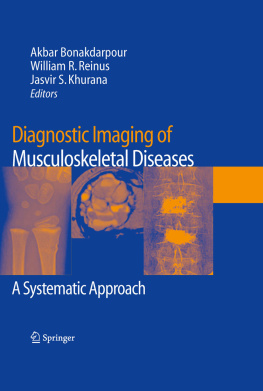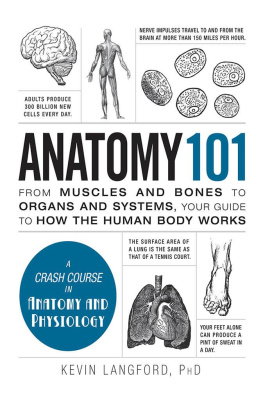The Framework of Our Bodies
Bone and muscles join forces to move us from one place to another. The musculoskeletal system controls our breathing, allows our eyes to focus, and shapes our smiles. It enables us to talk and to eat. Our strong bones support our weight. Skin wraps our body in a tough layer of tissue that keeps moisture in and germs out. Read all about how these amazing systems work.
About the Author
Susan Dudley Gold has written more than two dozen childrens books, many of which focus on health issues. She has also written three books on the history of Maine.

Image Credit: Life Art, Williams and Wilkins
Picture a house being built. Long, sturdy beams form the framework upon which the weight of the house will rest. Smaller beams and boards join the beams together and support windows, doors, and walls. Hinges allow doors to swing open and shut. Once the structure is in place, workers cover the framework with sheet rock and shingles.
The human skeletal system is much like the framework of a house. Like beams, the long bones of the legs, arms, and pelvis form the support structure of the human body. The bones also protect the bodys vital organs from harm.
The skeleton is made up of two parts: the axial skeleton and the appendicular skeleton. The axial skeleton has eighty bones which make up the skull, the spine, and the ribcage. The 126 bones of the appendicular skeleton form the shoulders, pelvis, arms, and legs.
Bones consist of three sections. The outer layer, called the periosteum, covers the bone. This thin white layer of skin contains nerves and blood vessels that bring oxygen and nutrients to the bone. Beneath the periosteum lies the compact bone, a layer of hard, rigid material made mostly of calcium and minerals. Within the compact bone, nerves and blood vessels snake their way through a maze of holes and passageways. Marrow, a fatty substance found in the hollow center of the bones, produces red and white blood cells. Red blood cells carry oxygen to the rest of the body, while white blood cells fight infection. Much of the bodys red blood cells are made in the marrow of the ribs. Spongy bonethin bony material with hollows that resemble those in a spongesurround the marrow.
The structure of bone allows it to support the weight of the body. Bone is made up of osteocytes, tiny bone cells. Collagen fibers fill the space surrounding these bone cells. These strands of collagen, a protein, make the bone flexible. Mineral salts of calcium and potassium, also in the bone, make the bone hard. This combinationstrength and flexibilityallows bones to support up to four times more weight than concrete. In fact, bones are living cells, sometimes called living concrete because of their strength.

Image Credit: Life Art, Williams and Wilkins
Spongy bone placed strategically at the ends of the long bones absorbs much of the pressure from the bodys weight and movements. Bone itself weighs little. Only about 14 percent of a persons body weight is from the skeletal system. That is because many bones are hollow. But one cubic inch of bone is strong enough to support ten small cars (from eighteen thousand to twenty-four thousand pounds).
Each bones shape matches the job it has to do. For example, the femurthe thigh bone located between the pelvis and the kneehas a wide end filled with spongy bone to absorb pressure from the upper body. The long, hollow portion of the bone is rock-hard, strong enough to support the persons weight.
Skeletal muscles allow the bones to move. By tightening and relaxing, these muscles let people walk, smile, play ball, eat, breathe, and do a thousand tasks that require movement. Almost 40 percent of a typical mans weight is from skeletal muscle. An average womans skeletal muscles account for slightly less of her overall weight.
The body has a muscle for every movement it makes. A person has about six hundred skeletal muscles, and each muscle has its own special job to do. For example, plantar flexor muscles turn the foot and the toes toward the floor. Something as seemingly simple as rolling ones eyes requires six muscles.
Skeletal muscles are voluntary muscles, responding to a persons commands. For example, a ballerina who wants to stand on her toes signals the foot and toe muscles to contract and allow her to move her body upward. Skeletal muscles are made up of bundles of fibers. The largest of these muscles, like those in the buttock, contain hundreds of bundles. Tiny muscles, such as those in the ear or the eye, have only a few. Under a microscope, a skeletal muscle has a series of light and dark bands running across it, resembling the skin of a king snake.
Though most skeletal muscles move bones, some have other tasks. Facial muscles control expressions. Muscles open and close the eyelid, stop urination, and help eliminate wastes from the body, among other duties. Thorax muscles expand and contract as a person breathes. Sheets of muscles in the abdomen protect the stomach, the liver, the kidneys, and other organs.

Image Credit: Life Art, Williams and Wilkins
Skeletal muscle is made up of bundles of fibers.
In addition to skeletal muscles, a person has two other types of muscle: smooth muscle and cardiac muscle. Unlike skeletal muscles, smooth muscles contract and expand without a persons command. These involuntary muscles act even while a person sleeps. They control, among other things, the urge to urinate, the flow of blood through blood vessels, and the bodys response to stress. Cardiac muscle, found in the heart, also acts involuntarily and controls the beating of the heart.
Skin plays the same role in the human body as sheet rock and shingles do on a building. Skin, the bodys largest organ, covers the entire surface of the body. Like shingles on a house, it keeps water out and warmth in. And like shingles, it has to be replaced periodically.
Everyone has two layers of skin. The outer layer of skin, called the epidermis, is about .1 millimeter thick (about one-tenth the thickness of a dime). It is made up of many cells, packed tightly together. These cells form one sheet of skin covering the body. This sheet of cells is watertight, airtight, and tough enough to protect the body from most chemicals and other harmful substances. It also stands as a guard against disease. The skeletal system depends on the skin to provide vitamin D, which the skin produces by using energy absorbed from the ultraviolet rays of the sun. Vitamin D helps the body absorb calcium, which makes the bones hard.

Image Credit: Life Art, Williams and Wilkins
SKIN
The innermost layer of skin, called the dermis, is made up of fatty tissue, blood vessels, nerve fibers, and smooth muscle cells. Its job is to provide a person with a sense of touch. It also regulates the bodys temperature, making sure a person doesnt become too hot or too cold.

